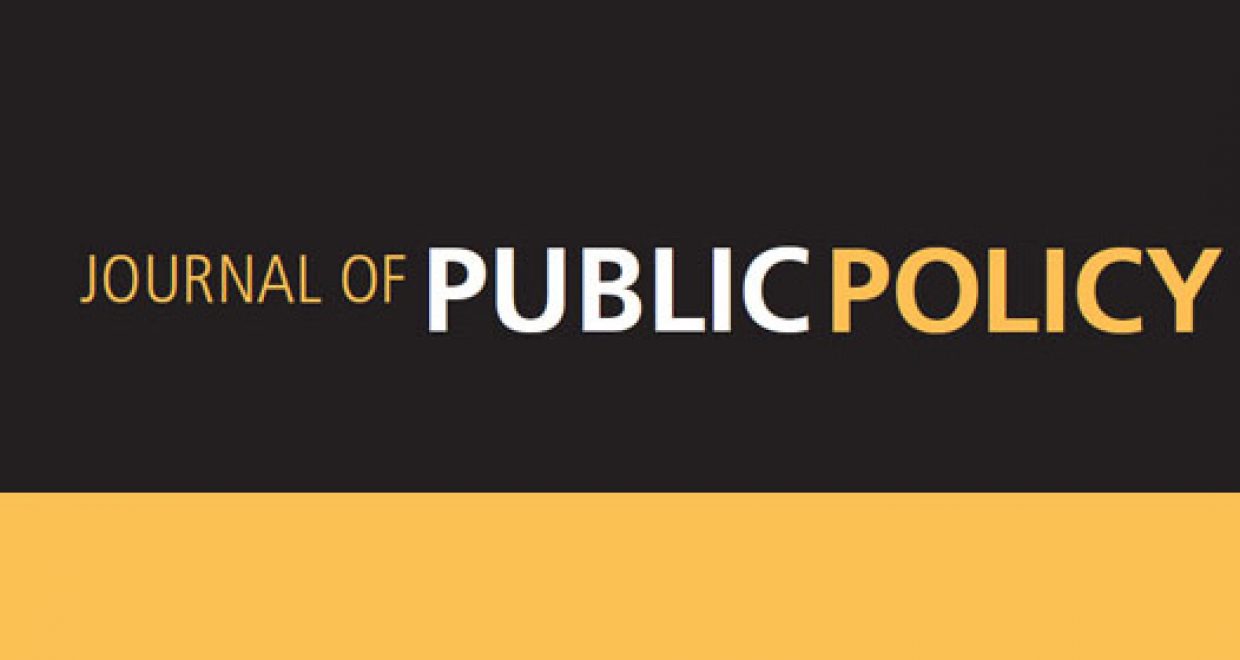Policy and the Dimensionality of Congressional Roll Call Voting
In a recent opinion piece on Bloomberg.com, Peter Orszag, former director of the Office of Management and Budget during the Obama Administration, suggested that the Covid-19 pandemic would be an unprecedented Political Science experiment that would test whether the threat of the virus could overcome the polarisation of American political parties. This common characterization of polarisation in America is much too simplistic, however. Our forthcoming article in the Journal of Public Policy challenges the typical characterization of partisan conflict in the U.S. Congress as occurring along a single left-right, liberal-conservative ideological dimension.
Partisan polarisation has become the defining feature of the literature on, as well as the broader public perception of, the U.S. Congress. By most accounts, the Republicans and Democrats have coalesced into two cohesive ideological teams that have diverged from each other along a the liberal-conservative axis. While there are many different indicators of this phenomenon, the dominant and leading indicator of this polarisation is the observed roll-call voting patterns in Congress, and most notably, Poole and Rosenthal’s (1997, 2007) NOMINATE procedure for scaling roll call votes. Watching the two parties diverge into two separate balls over several decades of NOMINATE data is like watching political mitosis.
While the sorting of congressional parties into two increasingly differentiated and hostile teams seems undeniable, the meaning and nature of this polarisation is open to interpretation. Poole and Rosenthal clearly interpret this polarisation in roll call votes to imply that the members of the parties in Congress are more likely to be ideologically further apart in the left-right, liberal-conservative space. Further, they also argue that this single ideological dimension can account for most of the roll call votes made by members of Congress. However, others have challenged this characterization of roll call behaviour and ideological polarisation by noting that methods such as NOMINATE fail to distinguish the content of legislation being voted on, and thus, overestimate polarisation and underestimate the dimensionality of partisan conflict in Congress.
Our research provides a systematic approach to analyzing these claims, particularly with regards to the dimensionality of political competition in Congress. Specifically, we analyze roll call voting on final passage votes in the U.S. House in the 111th through the 113th congresses (2009-2014), with a special focus on the behaviour of minority party members. We argue that the behaviour of minority party members should be easier to predict relative to majority party members given that the latter face more pressure from their party leadership. Using a machine learning approach to classify bill topics for final passage votes, we find that bill topics, along with origination committees, are better predictors of roll call votes than measures of ideology derived from NOMINATE and measures of constituency characteristics. Specifically, we use a structural topic model that provides a foundation to estimating up to 50 different bill topics. Notably, bill topics can predict votes out-of-sample but NOMINATE scores provide little to no power out-of-sample. If the claims that a single left-right dimension underlies congressional behaviour were accurate, we would expect that predictive ability of ideology scores such as NOMINATE would be high. These findings, thus, cast serious doubt on the standard model of polarisation and, by implication, raise questions about models of congressional organization that assume a single policy dimension can adequately capture party competition in Congress.
These findings have several important implications for the study of Congress. First, it suggests that we need to build a richer explanation for roll call votes that take account for how members make tradeoffs across different policy dimensions. Second, it suggests that accounts of congressional polarisation are incomplete. Given there are multiple policy dimensions underlying congressional behaviour, polarisation may be present on some issues but absent on others. Finally, the findings suggest a better way to capture the policymaking process in Congress is to conceptualize competition within and between the parties as a bargaining game in a multidimensional policy space.
– Scott de Marchi, Duke University, Spencer Dorsey, Duke University and Michael J. Ensley, Kent State University
– The authors’ forthcoming Journal of Public Policy article is available free of charge until the end of August 2020




